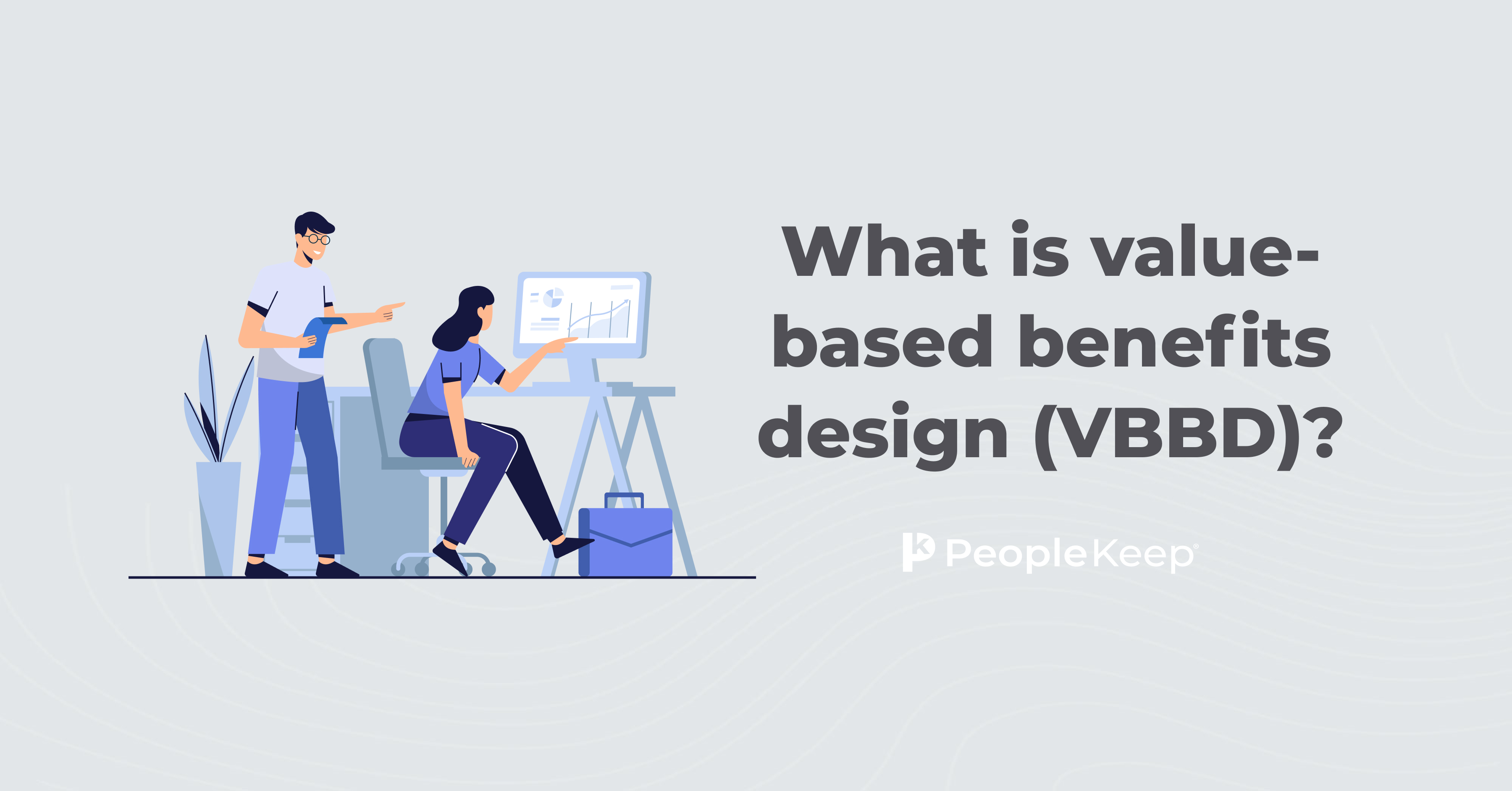Increasing engagement in your health benefit
By Holly Bengfort on July 17, 2025 at 8:00 AM
To maximize the impact of your employee health benefit, it's crucial to go beyond just offering it. Engagement is key.
Comprehensive health benefits are more than perks. They're vital tools for retaining top talent and fostering a productive workforce. However, the challenge most organizations face is ensuring employees actually engage with and utilize these innovative health offerings. Despite companies investing significant resources in designing attractive health plans, a lack of awareness and understanding often leads to underutilization.
In this article, we'll go over six ways you can increase employee engagement in your health benefit.
In this blog post, you'll learn:
- Why employee engagement with your health benefit is important.
- How to gather employee data on health benefit engagement.
- How you can reimburse a variety of employee healthcare costs using an HRA.
Why is offering a health benefit important?
Offering healthcare benefits sets your organization apart as a responsible employer that prioritizes employee well-being. This creates a positive relationship with your employees since it shows them you care. On top of that, it entices job seekers to apply.
According to PeopleKeep’s 2024 Employee Benefits Survey, 81% of employees said an employer's benefits package is an important factor in whether they accept a job. Health benefits are also the most desired employee benefit, with 92% of employees rating them as important.
Employee health benefits can also have a positive impact on job satisfaction and staff turnover. When engaged employees feel cared for by their employer, they're less likely to look for better opportunities elsewhere.
How to increase employee engagement in your health benefit
There's no good in offering a health benefit that your employees don't use. If your employees aren't using their benefits, they won't reap the rewards. It can also be frustrating to spend money on benefits that see little to no use. Let's go over six strategies that can help you improve employee engagement and satisfaction with your health benefits.
1. Provide personalized benefits
Traditional group health insurance is the standard choice among many employers. But, it's not always the best option. Group health insurance is one-size-fits-all. Your employees don't get a say in their coverage or the network of healthcare professionals that they're supposed to trust with patient care. Plus, employers are stuck with a hefty price tag, not to mention the annual rate hikes and steep employee participation rates that come with a group plan.
The first employee engagement strategy is to provide personalized health benefits. If you want to go the extra mile to improve the employee experience at your organization, you should offer a healthcare benefit that's tailored to meet their needs. You can do this through a stand-alone health reimbursement arrangement (HRA).
HRAs are employer-funded health benefits. They allow you to reimburse your employees for their individual insurance premiums rather than purchasing group coverage for them. This is an effective way to curb healthcare costs since individual premiums are often cheaper than group premiums. An HRA can also enhance patient experiences and health outcomes for employees by giving them more control over their healthcare choices. By choosing their own individual plan, employees can ensure they get coverage that meets their needs.
Two of the most popular stand-alone HRAs are:
- The individual coverage HRA (ICHRA): The ICHRA works for employers of all sizes. Employees need their own individual insurance coverage to participate. A major benefit of the ICHRA is the flexibility it gives employers. They can customize allowances for different employee classes, such as full-time or part-time workers. They can also vary allowances by employee age and family status, such as single or married.
- The qualified small employer HRA (QSEHRA): The QSEHRA is only for small employers with fewer than 50 full-time equivalent employees (FTEs). All W-2 employees qualify for this benefit. But they must have coverage that meets minimum essential coverage (MEC) standards to receive reimbursements.
With an HRA, employers set an allowance amount of tax-free money for their employees to use on their healthcare expenses. Employees can purchase individual policies on the Health Insurance Marketplace using their own money. They can also pay for necessary medical treatment or items. After that, they submit their expenses for reimbursement. Once the employer approves the eligible expense, they reimburse the employee up to their allowance amount.
Some examples of HRA-eligible expenses include:
- Individual monthly premiums for health, dental, and vision plans
- Preventive care services
- Emergency care services
- Prescription drugs
- Over-the-counter medicine
- Mental health counseling
2. Communicate clearly and frequently
Effective communication can also have a direct impact on increasing employee engagement in health benefits. Make sure to regularly update employees on the benefits available to them, how to access them, and any changes or updates to the benefits package.
Leverage various internal communication platforms to guarantee that every employee obtains the information, such as:
- Newsletters
- Intranet portals
- In-person meetings
3. Educate employees about their benefits
Many employees may not fully understand the range of health benefits available to them or how to utilize them best.
To help your employees better understand their health benefits, you can offer educational resources, such as:
- Workshops
- Webinars
- One-on-one consultations with benefits experts
For example, your HR team could hold quarterly meetings with a representative from your insurance provider to give employees a chance to ask their questions in person and put a face to the name.
You can also provide learning opportunities through wellness guides, healthy recipes, and exercise tips to empower employees to take control of their health. By embracing continuous learning, engaged workers learn more about their benefits even after you hire and onboard them.
4. Create an employee wellness program
To enhance workplace wellness, consider incorporating additional features into your health benefit. Implementing a wellness program can reinforce your dedication to boosting employee health outcomes.
Wellness programs are worthy investments. They can help your employees avoid costly health problems by promoting preventive care, healthier lifestyles, and early intervention for chronic diseases.
Some examples of employee wellness programs include:
- Smoking cessation programs
- Weight loss programs
- Personal health assessments
- Disease management programs
- Blood pressure screenings
- Biometric screening fairs
- Mammogram screening fairs
- Flu shot clinics
- Virtual fitness challenges
Keep in mind that you can design your well-being program to meet the needs of your employees. You can focus purely on physical wellness, or take a holistic approach by including social, financial, and mental health.
5. Offer incentives
If you want engaged workers, incentives can be a great way to encourage them to take advantage of their health benefits. Consider offering rewards or prizes for employee participation in wellness programs, completing health screenings, or reaching specific health goals. Incentives can range from gift cards to additional paid time off (PTO), depending on the budget and resources available.
6. Ask for employee feedback
Finally, if you want to improve the employee experience with health benefits, you should regularly ask them for feedback. Ask your employees for suggestions on how to improve the benefits package, what programs or services they would like to see added, and how the benefits have impacted their health and well-being.
Sending out employee surveys once or twice a year is an easy way to gauge how your employees feel about their benefits, whether or not they understand them, and if they think something is missing. Take the survey results and update your plan accordingly. This effective collaboration can help keep engaged employees interested in what you're doing to improve workplace wellness.
How PeopleKeep by Remodel Health can help
Small and mid-size businesses often struggle to afford traditional group health insurance. An HRA offers a flexible and cost-effective alternative. Transitioning to an HRA might seem daunting, but PeopleKeep by Remodel Health is dedicated to ensuring a seamless switch. Our user-friendly software simplifies the process of offering a tailor-made health benefit to your team. With our help, you can set up and manage your benefit in just minutes each month.
Our services include:
- Customizing your plan and allowances
- Reviewing documentation for employee expenses
- Generating federally required plan documents for compliance and privacy
- Providing award-winning customer support
Our team handles these tasks so you can focus on managing your business. Plus, we improve the employee experience of shopping for health insurance coverage. Instead of struggling to figure out the Health Insurance Marketplace on their own, employees can shop for individual health plans right from their PeopleKeep accounts.
Want to offer an ICHRA as a large employer? Remodel Health’s ICHRA+ solution is the best fit for you.
Conclusion
Several factors influence employee engagement in healthcare benefits. Employers can improve workforce health by using strategies to boost participation rates. This also increases productivity and employee satisfaction.
This article was originally published on January 10, 2022. It was last updated on July 17, 2025.
Check out more resources
See these related articles

What are health insurance rewards programs, and how do they impact HRAs?
In this article, we'll explain how health insurance rewards programs work and how they impact benefits like health reimbursement arrangements (HRAs).

What is value-based insurance design (VBID)?
Learn what value-based insurance design (VBID) is and how it helps improve care quality while reducing healthcare costs.

Health insurance reimbursements: What are the options?
Explore your options for health insurance reimbursement. Understand what insurance reimbursement means and how HRAs can support employees.



